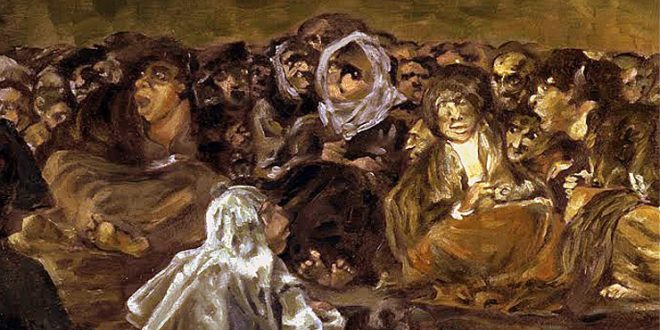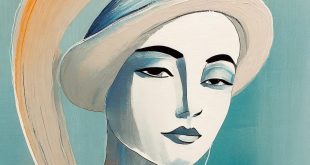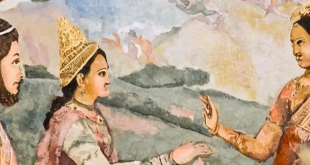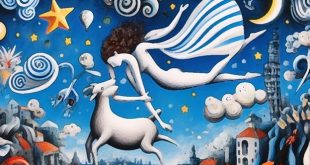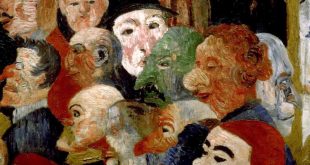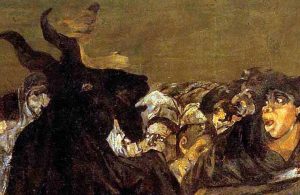 FRANCISCO GOYA 1/4 – The son of a guilder, who spent some of his youth in Saragossa. Francisco José de Goya y Lucient was considered the most important Spanish artist of late 18th and early 19th centuries. He studied painting from age 14 and moved to Madrid to study with Anton Mengs. He submitted entries for Real Academia de Bellas Artes de San Fernando, but was denied. He sought further his art education in 1770 or 1771, by traveling to Italy. In Rome he studied the classic works. Immensely successful in his lifetime, he is referred to both the last of the Old Masters, but for the bold technique of his paintings, the haunting satire of his etchings, he is often called the first of the Moderns.
FRANCISCO GOYA 1/4 – The son of a guilder, who spent some of his youth in Saragossa. Francisco José de Goya y Lucient was considered the most important Spanish artist of late 18th and early 19th centuries. He studied painting from age 14 and moved to Madrid to study with Anton Mengs. He submitted entries for Real Academia de Bellas Artes de San Fernando, but was denied. He sought further his art education in 1770 or 1771, by traveling to Italy. In Rome he studied the classic works. Immensely successful in his lifetime, he is referred to both the last of the Old Masters, but for the bold technique of his paintings, the haunting satire of his etchings, he is often called the first of the Moderns.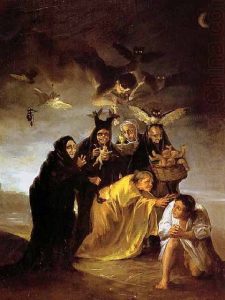
FRANCISCO GOYA 2/4 – Witches appear in several of his works, reflecting the fascination with supernatural themes and the violence, how such minds inflict on the world. His “Witches’ Sabbath” (part of a serie of six paintings related to witchcraft acquired by the Duke and Duchess of Osuna) is oil on canvas in the Museo Lázaro Galdiano in Madrid. http://meetingbenches.com/2017/04/bewitched-landscapes-world/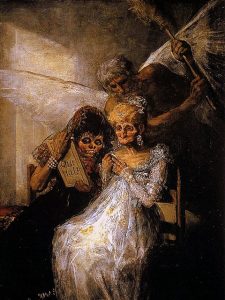
FRANCISCO GOYA 3/4 – Throughout his long career he was a commentator and chronicler of his era. In 1786, he became a court painter of the Spanish Crown. He began to establish his reputation as a portrait artist, winning commissions in royal circles. Works such as “The Duke and Duchess of Osuna and their Children”, illustrate his eye for detail, but he also captured the tiniest elements of their faces and clothes. Without pretense to allegorical meaning, his “Maja Desnuda” was the first profane life-size female nude in Western art. In 1793, he suffered an undiagnosed illness, which left him completely deaf and his work became darker and pessimistic.
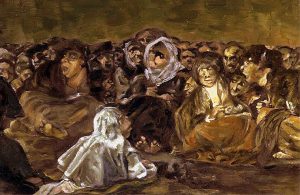 FRANCISCO GOYA 4/4 – In 1795, continuing to thrive professionally, he was named the director of the Royal Academy. His late period culminates with the “Black Paintings” applied on oil on the plaster walls of his house. “Saturn Devouring His Son” is one of murals, which was never intended for public display. http://meetingbenches.com/2017/04/witches-paintings/ In 1824, disillusioned by social developments, he abandoned Spain. Accompanied by his 35 years younger maid and companion, Leocadia Weiss, who may or may not have been his lover, he moved to retire in French city, Bordeaux, where he also died. Later, his body was re-interred in Spain.
FRANCISCO GOYA 4/4 – In 1795, continuing to thrive professionally, he was named the director of the Royal Academy. His late period culminates with the “Black Paintings” applied on oil on the plaster walls of his house. “Saturn Devouring His Son” is one of murals, which was never intended for public display. http://meetingbenches.com/2017/04/witches-paintings/ In 1824, disillusioned by social developments, he abandoned Spain. Accompanied by his 35 years younger maid and companion, Leocadia Weiss, who may or may not have been his lover, he moved to retire in French city, Bordeaux, where he also died. Later, his body was re-interred in Spain.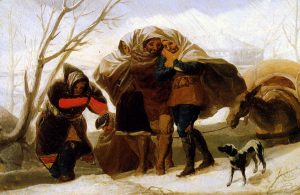
To pursue this issue, you can digit: http://meetingbenches.com/2017/04/witches-eyes-francisco-goya/ The intellectual property of the images that appear in this blog correspond to their authors. The sole purpose of this site, is to spread the knowledge of these painters and that other people enjoy their works.
 Meeting Benches World art in all forms
Meeting Benches World art in all forms
